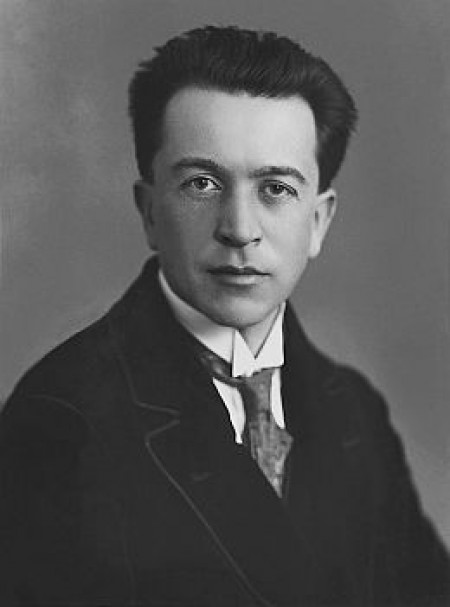
17 March 1887, Bardejov – 15 May 1959, Budapest
Aladár Zalánfy studied composition and organ with Johann Koessler at the Academy of Music between 1905 and 1908, then with Karl Straube, the great interpreter of Bach and the Classical organ literature, with Siegfried Karg-Elert composer and furthermore with Charles-Marie Widor, one of the most outstanding organist of the turn of the century. As a virtuoso organist he gave concerts in Hungary and abroad.
He taught at the Nemzeti Zenede [Music Secondary School] from 1913 and the Székesfővárosi Felsőbb Zeneiskola [Higher Music School of the Capital]. He became professor of the Academy of Music where he taught organ theory, organ construction and choral practice subjects besides organ performance as a professor at the organ division, and liturgy, church singing, literature of church music at the protestant church music department.
He was amazingly consistent, precise, strict but always righteous and expected the same from his students as well. He taught the compositions of early masters such as Buxtehude, Frescobaldi, Bach and of the Romantic and later composers as C. Franck, Liszt or Reger with equal interest. He did not seclude himself from contemporary music. When I showed him my Te Deum Fantasy as a senior student which I just finished that year, he substituted the Franck piece which I prepared for a concert with that. He was ahead of the practice of that time in liturgy, as well. Prospective church musicians also had to know the richer liturgy which is being used today and was subject of debates at that time. His sense for justice did not allow any differentiation other than knowledge to prevail among his students. For example even candidates who had studied with him for one year already as a minor student and he himself encouraged them to apply for the major had to perform the B-flat major or F minor scales and one prelude and fugue from Bach's Wohltemperiertes Klavier at the entrance exam. He raised generations of outstanding organists until his retirement in 1950.
As an organ expert and designer he fought persistently for that the results of the modern organ construction based on the traditions of the early (Baroque) and French organ building should gain more ground in domestic organ construction, as well. One of the best results of these efforts was the organ of the Lutheran church of Óbuda, designed by him. This instrument, manufactured by the Rieger factory in 1939/1940 based on the plans of Zalánfy, had the nicest sound among the organs of the capital in that time, according to experts. At its inauguration we could be amazed by the virtuosic performance of the artist who quit concertizing because of the non-adequate instruments. The organ was unfortunately destroyed at Budapest's siege on New Year's Eve in 1944. The designer kindly confessed that he shed tears for its destruction. Although he declared that not simply should the old instrument be rebuilt, instead, he prepared a new plan based on the experiences of the sounding of the old instrument. It did not depend on him that the plan could not have been realized up to now.
Zalánfy was the primary organist of the St. Stephen Basilica from 1914 and of the Lutheran church at Deák square from 1923 until his death. He took his profession seriously in an exemplary manner there, as well. He always prepared carefully for services. Although he gave up concertizing he was a permanent continuo-player for the performances of oratorios and cantatas for a long time. He helped choral conductors a lot by his knowledge of styles and experience at such occasions, for which they were respectful and grateful. His inspiration and advice had a fundamental role in that the Lutherania choir and orchestra of the Deák square Lutheran church undertook the performances of the greatest works of Bach.
His compositional work is lesser known. Besides the two-volume organ school (Az orgonajáték művészete; The Art of Organ Playing) we know about unpublished chorale preludes and choral works. He composed organ accompaniments to the melodies of Martin Luther's religious poems and published the Eight Little Preludes and Fugues by Bach and his series of manual-chorale preludes. Many of his valuable studies in connection with the organ were published.
And one personal remembrance which shows the personality of Zalánfy - which was generally known austere - from a different side. I visited him with my wife after the war, and he returned our visit according to the conventions. My sons greeted him on his arrival then they went to the other room. At the end of the visit, shortly after Zalánfy left, the doorbell rang: for our surprise Aladár came back and said: ‘Where are the children? I have forgotten to say goodbye to them!'
S. I.


